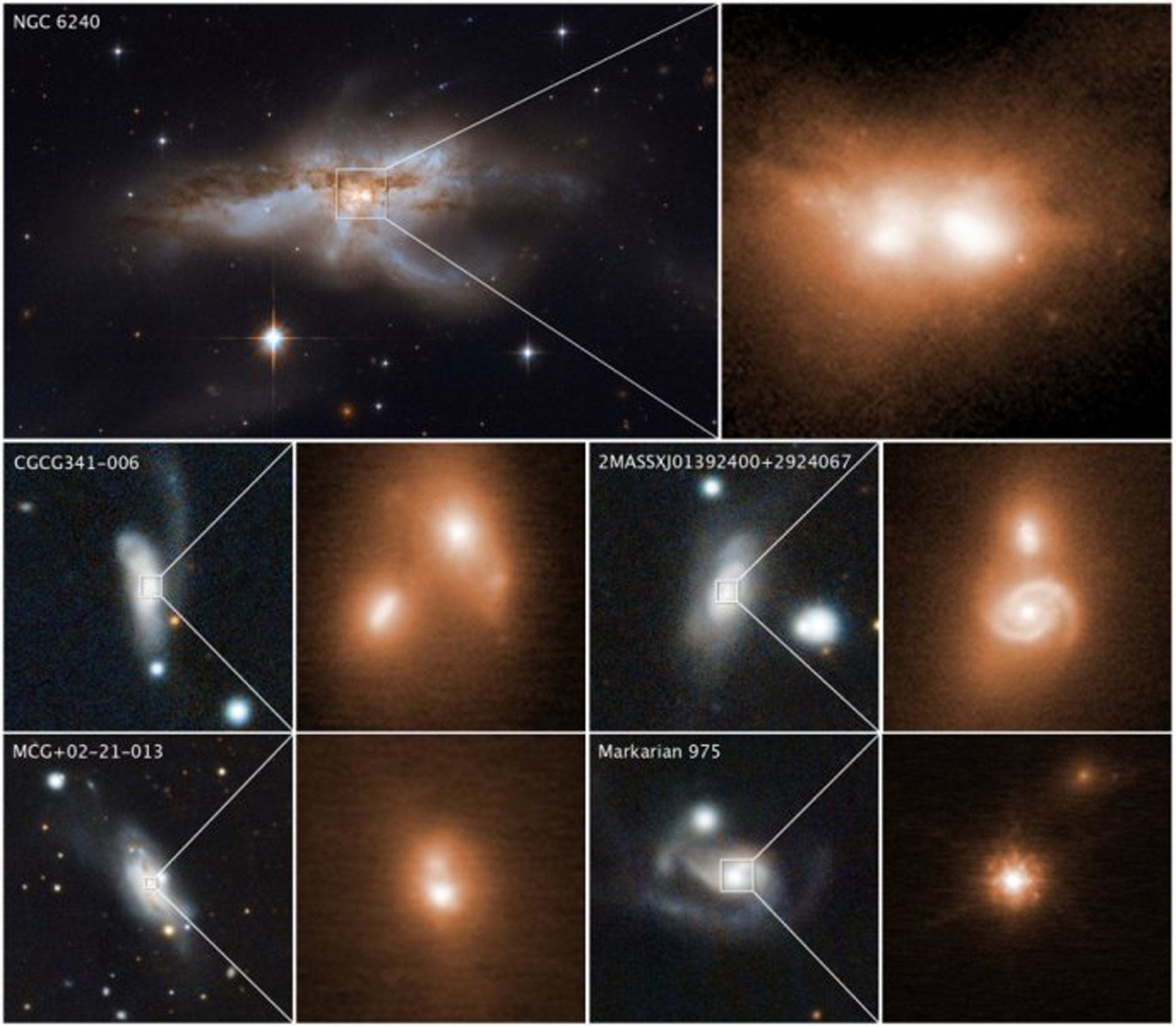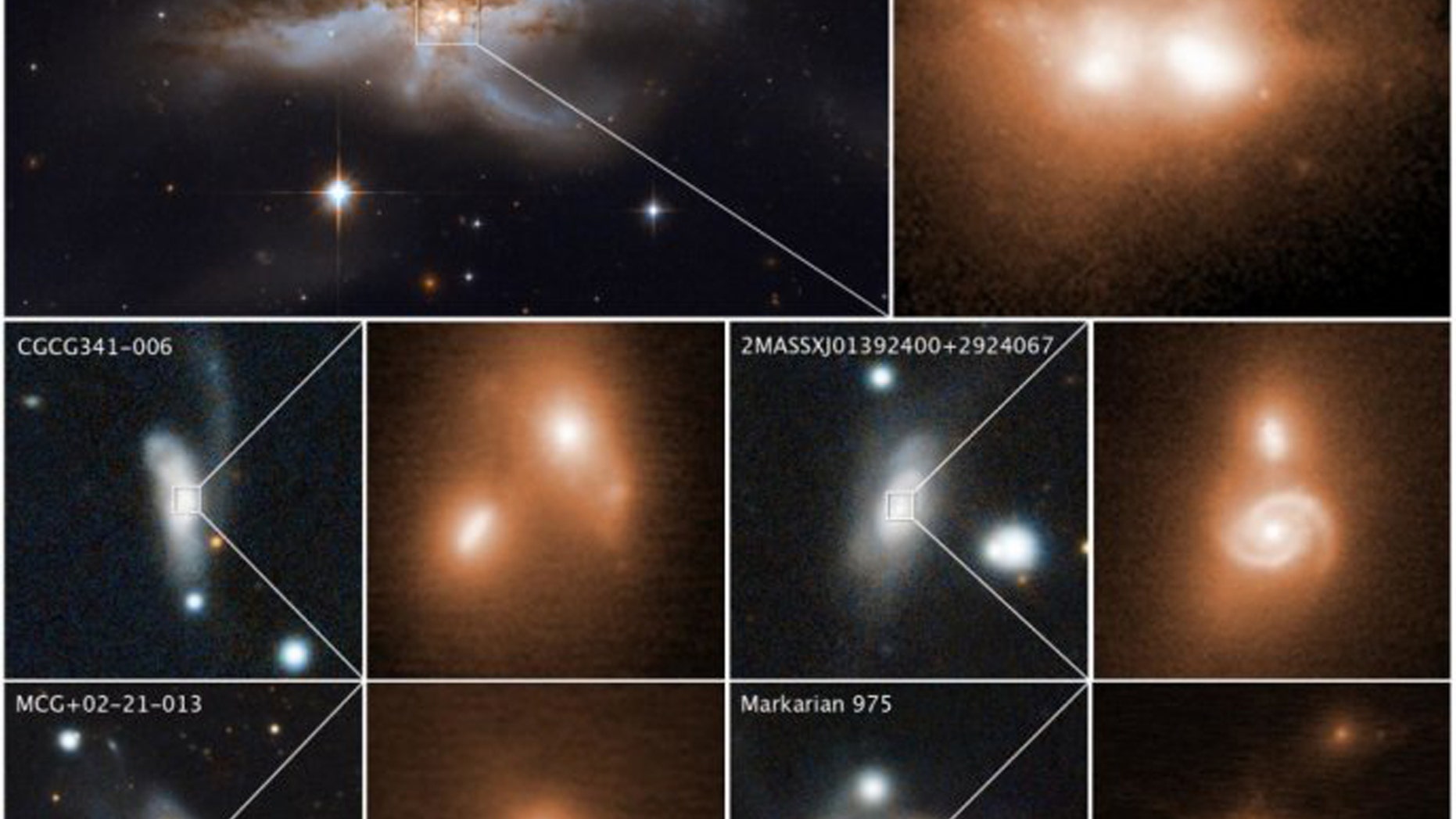
[ad_1]

These images reveal the final stage of a union between pairs of galactic nuclei in the messy cores of colliding galaxies. Credit: NASA, ESA, and M. Koss (Eureka Scientific, Inc.)
Scientists have managed to capture, for the first time, a series of images showing what happens when galaxies collide and merge together, causing a massive explosion and supermassive black holes uniting to form one giant black hole.
Put another way, this is likely how it will look when our own Milky Way galaxy eventually collides with the nearby Andromeda galaxy.
The scientists, led by Eureka Scientific researcher Michael Koss, were able to capture the images by looking through the thick walls of gas and dust that surround the galaxies’ cores, leading to the incredible images.
CREEPY ORANGE ‘AIRGLOW’ SURROUNDS THE EARTH
“Seeing the pairs of merging galaxy nuclei associated with these huge black holes so close together was pretty amazing,” Koss said in a statement. “In our study, we see two galaxy nuclei right when the images were taken. You can’t argue with it; it’s a very ‘clean’ result, which doesn’t rely on interpretation.”
The images were taken by the Hubble Telescope’s Wide Field Camera 3 and show the galaxy NGC 6240. The massive black holes at the center of the colliding galaxies are expanding “as they feast on gas kicked up by the galaxy merger,” the statement said.
The statement adds that the growth of the black holes comes from the last 10 to 20 million years of the merged galaxy, and expects that over the next 10 million years, the black holes will merge “to form a more massive black hole.”
They obtained the images by looking for visually obscured, active black holes, and going back through 10 years’ worth of X-ray data from the Burst Alert Telescope (BAT).
“The advantage to using Swift’s BAT is that it observes high-energy, ‘hard’ X-rays,” said study co-author Richard Mushotzky in the statement. “These X-rays penetrate through the thick clouds of dust and gas that surround active galaxies, allowing the BAT to see things that are literally invisible in other wavelengths.”
SPACE SHOCKER: ASTRONOMERS CONFIRM EARTH HAS TWO HIDDEN ‘DUST BUNNIES’ SURROUNDING IT
Inevitable destruction of the Milky Way galaxy
Something similar is expected to happen when our Milky Way galaxy crashes with the nearby Andromeda galaxy, though it’s not expected to happen anytime soon, the researchers said.
“The images also presage what will likely happen in a few billion years, when our Milky Way galaxy merges with the neighboring Andromeda galaxy,” the statement reads. “Both galaxies host supermassive black holes at their center, which will eventually smash together and merge into one larger black hole.”
Earlier this year, NASA released a video simulation of what is likely to happen when both galaxies inevitably collide.
“The thin disk shapes of these spiral galaxies are strongly distorted and irrevocably transformed by the encounter,” NASA wrote in a statement accompanying the video. “Around 6 billion years from now, the two galaxies will merge to form a single elliptical galaxy.”
So while a massive, cataclysmic explosion will inevitably cause the destruction of our own galaxy, it’s not set to occur anytime soon. So you can rest easy… for now.
Follow Chris Ciaccia on Twitter @Chris_Ciaccia
[ad_2]
Source link